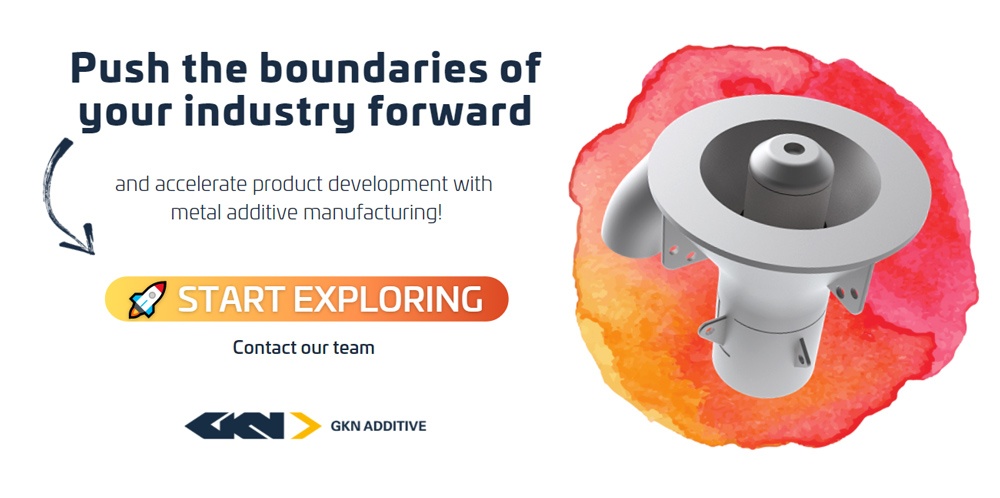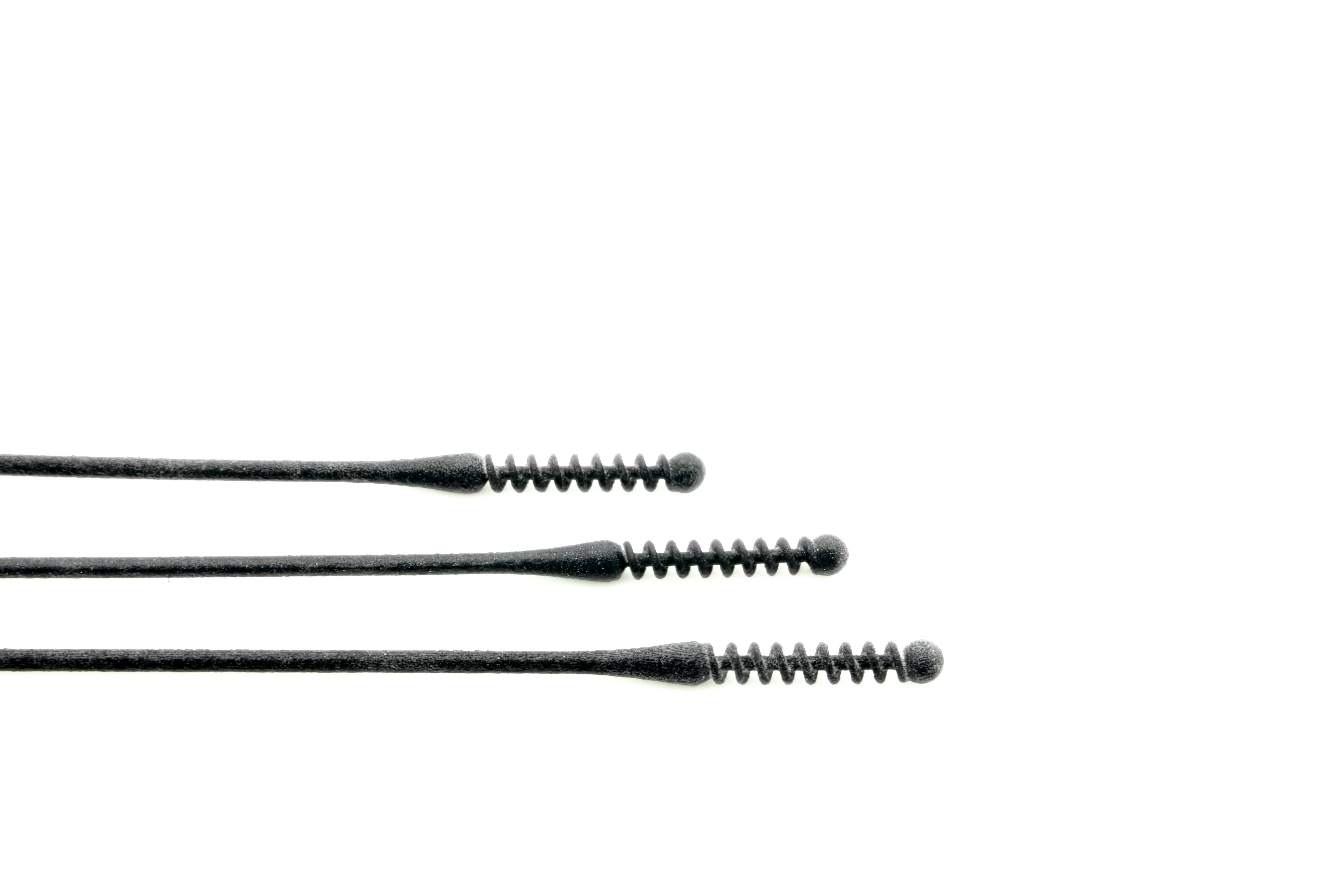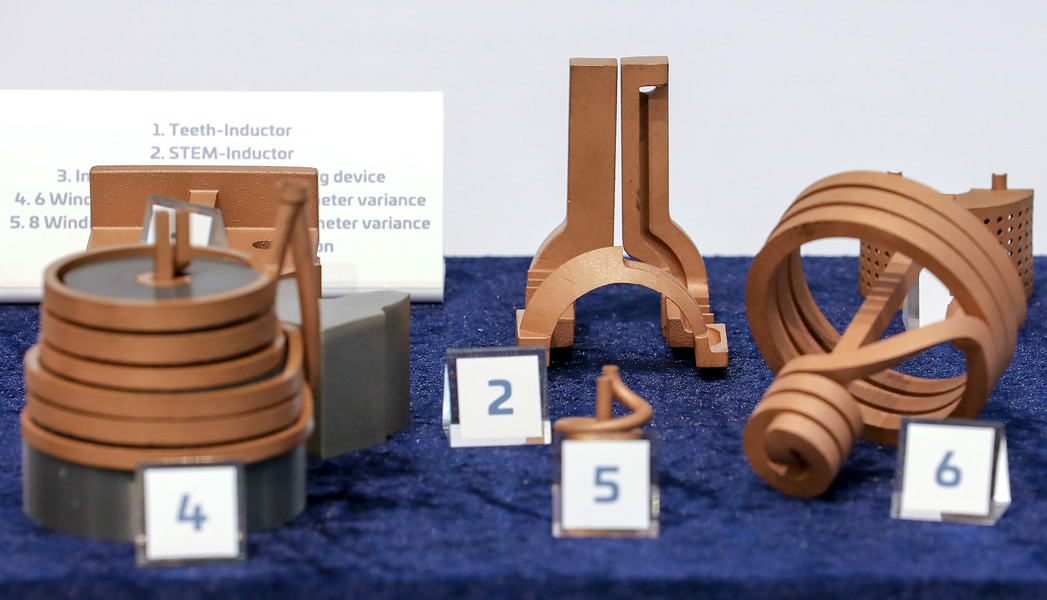Read time: 6 mins
Date posted: Oct 2020
Theme: Additive Manufacturing
How 3d printing rocketed Pythom inc.'s position in the space industry
Marco Polo, Columbus, Amundsen - throughout history we could not tame our unlimited curiosity to find the unknown and discover the road less travelled. This desire to push boundaries is part of our evolution. Our history books are full of pioneers, adventurers and wanderers who explored the world and stepped into the unknown.
The exploration of space is the latest adventure of mankind, and perhaps the most exciting. One of the big questions: When will commercial space travel become reality? Additive Manufacturing is playing a key role in enabling the production of low-cost satellites and lighter, more efficient rockets to take cargos into orbit. And companies as the California-based space startup Pythom Inc. help to push the space industry forward with the PhytomSpace project.
PythomSpace specializes in building small launch vehicle rocket engines, that will make future space exploration more affordable. Founders Tina and Tom Sjögren moved from Sweden to the US about 20 years ago. The entrepreneurial couple has a background in mountaineering and polar skiing before they discovered their passion for space. The majority of their team at PythomSpace are people they met on their professional expeditions. Fun fact: together, team Pythom achieved 25 entries in the "Guiness Book of World Records".
PhytomSpace partnered with 3D printing specialist GKN Additive to accelerate product development and leverage the economic advantages Additive Manufacturing offers. We sat down with Tom Sjögren to get a better understanding of their roadmap, future plans and latest trends in the space industry.
.jpg?width=800&name=Modul%201%20(2).jpg)
Why are mostly startups helping the space industry to grow and evolve?
In May, Elon Musk made history when he launched NASA astronauts to ISS. For the first time, NASA was edged out of the process. Everything came from one single company: the rocket, the spacecraft, all the technology and all the software. They even got a ride out to the launchpad in a Tesla. And SpaceX did it cheaper than any other rocket company out there.
Elon Musk does not have a background within the traditional aerospace industry, which shows how start-ups are now coming from absolutely nowhere. With a limited engineering background, they throw themselves at all the new tools available and kick ass with the establishment.
And 3D printing is this new tool in your toolbox?
Yes, exactly! We are currently building a rocket with a very small team. 20 years ago, this process would have required maybe a thousand people. Our company wouldn’t even have been possible back then, but 3D printing changes things: we can now save time and a lot of money. You don't have to pay the hundreds of thousands of dollars that you did before.
If we said 10 years ago that we were going to do this, I myself wouldn't have believed it. Now it's happening.
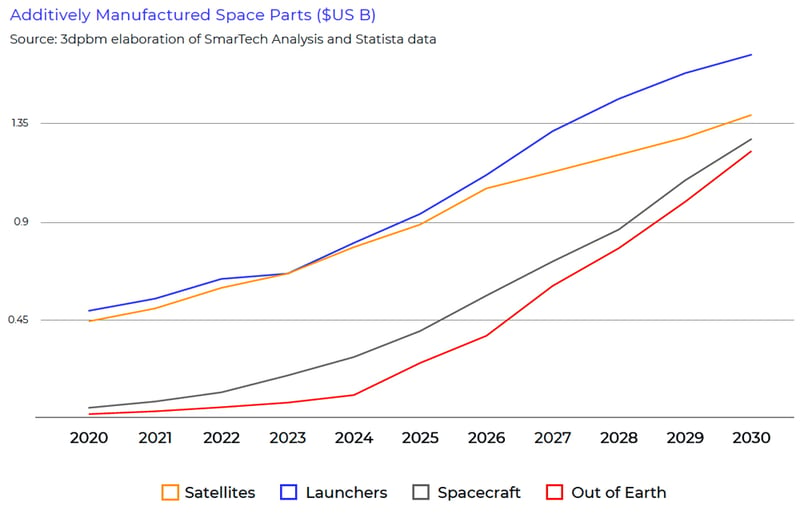 The demand for AM applications is the commercial space industry is growing exponentially. (Copyright Image: 3dpbm. For more insights on Aerospace AM check out the full Aerospace AM Focus 2020 eBook)
The demand for AM applications is the commercial space industry is growing exponentially. (Copyright Image: 3dpbm. For more insights on Aerospace AM check out the full Aerospace AM Focus 2020 eBook)
What is the problem that PythomSpace is solving?
We went to the moon in the 60s on a rocket called Saturn V. The Apollo Lunar Module was the lander spacecraft at the top of the rocket. The mission had different propellants for different stages of the rocket, and this was also the case for the Apollo and even the lunar lander. Our system uses the same propellants through the entire journey.
Why do rockets need different fuels?
95 percent of all rockets today use liquid propellants, like liquid oxygen. And for oxygen to stay liquid, it has to be kept at really, really cold temperatures. To stay that cold in space you pretty much have to bring a fridge with you. I'm simplifying here, but you need a big machine that can keep the oxygen at that low temperature all the time. We don’t have that technology today, so we must change fuels when we get high up.
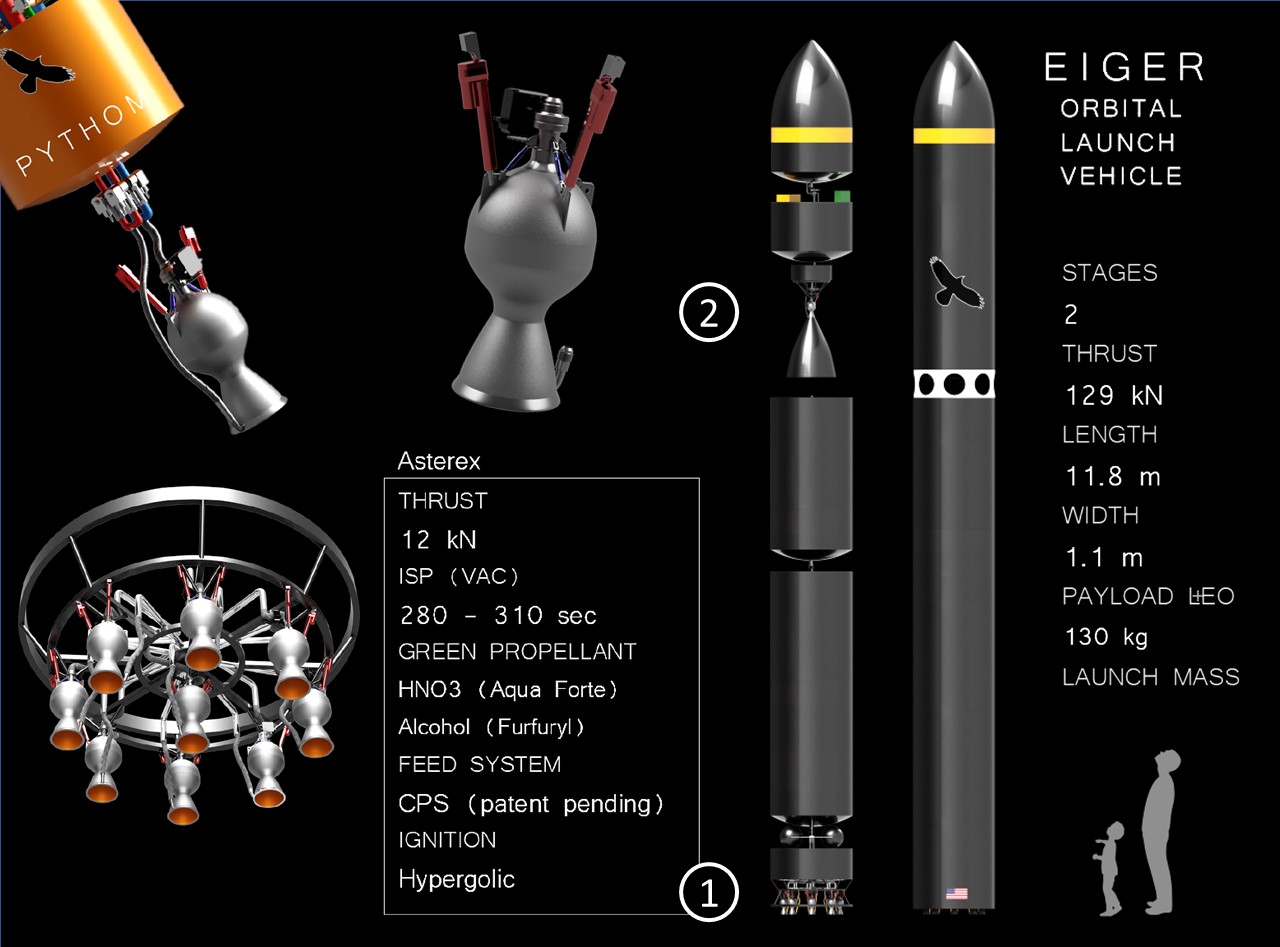
This is an overview of the EIGER launch vehicle. All PythomSpace vehicles are named after mountains. Eiger is an legendary mountain in Switzerland, that is very hard to climb fron the north side.
Stage 1 is equipped with a cluster of 9 Asterex engines. The fuel tank contains Furfury alcohol. The Asterix engine at the bottom of stage 2 is similar as the engine at stage 1, but with larger nozzles. It's more efficient to have a large nozzle in the vacuum of space. The Stage 2 fuel tank contains nitric acid.
Why does the propellant have to be frozen?
It’s more potent when frozen, so you get a stronger thrust. You need a lot of thrust to overcome gravity when you leave earth, but once in space, you don't need as much.
That’s why you change to storable propellants in space. Except for some basic isolation, storable propellants don’t have to be kept cold. This makes it easier to increase or change speed.
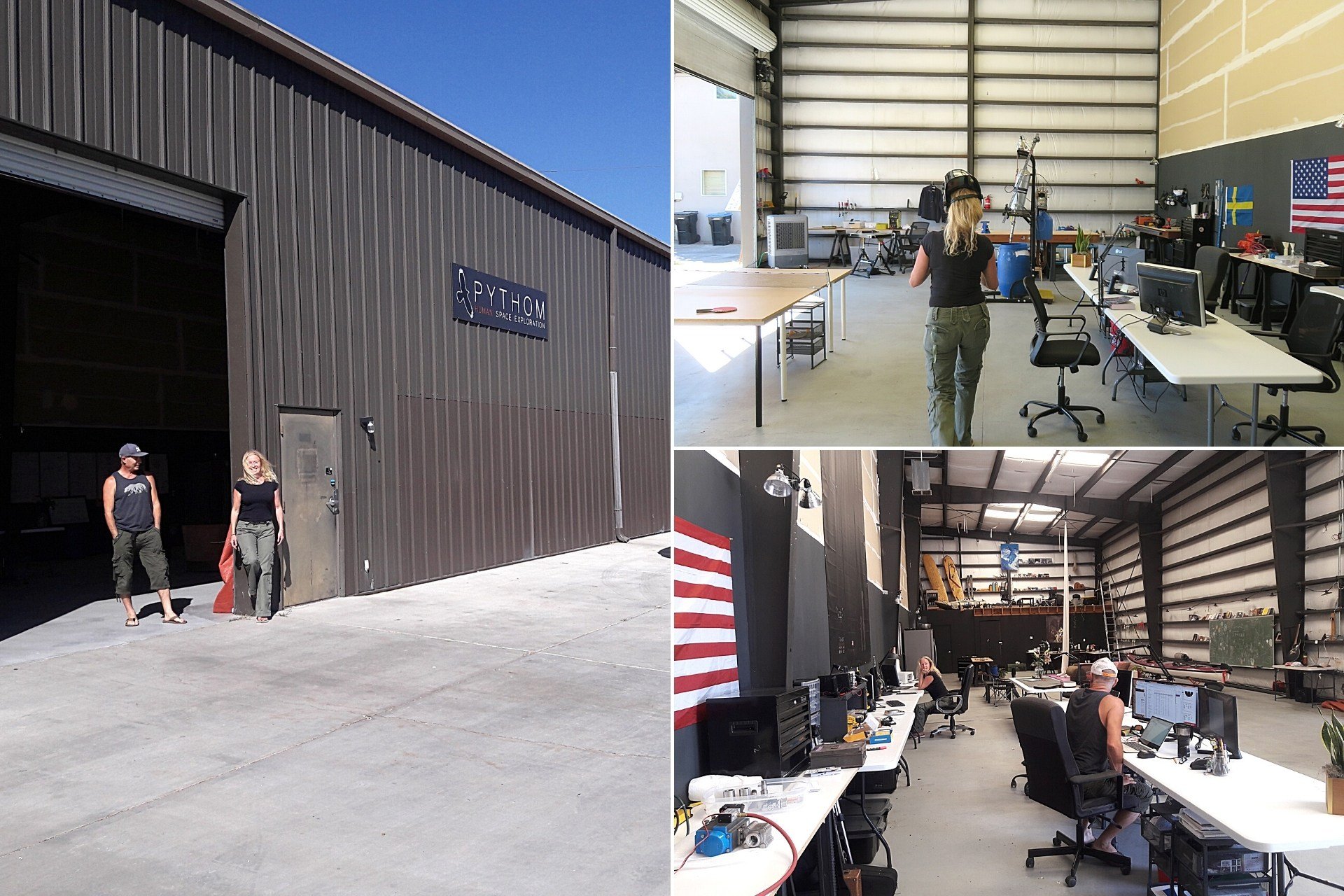
The office of PythomSpace is located in Bishop, California. (Copyright: Pythom Inc.)
How is PythomSpace solving this rocket fuel challenge?
We are building an engine that works both for an Earth launch and in space. This type of engine will be a huge advantage if we go to other planets, to an asteroid, to the moon, or for mining. To get it to work, we first had to solve the difference in thrust requirements while using storable propellants. Our solution became comparable to a race car: It has much higher pressure inside the engine than regular cars because when you pressurize your propellants, you get more effect and maximize the amount of torque.
We also knew we had to create higher pressure inside our rocket to reach our goal. Small launch vehicles, like the ones we are building, can take between 100 up to 500 kilos payload to space and their maximum chamber pressure is 5 megapascal. With 3D printing, we see a two times increase. Right now, we are working with a chamber pressure of 10 megapascal.
What’s the secret to increasing the chamber pressure?
Usually you need turbo pumps, but they don't work well for small rockets. So, we developed a patent-pending solution, which is essentially a cyclical pressure system that can reach high pressure without turbo pumps.
We are building and testing that right now, while also looking at the possibility to additively manufacture the cyclic pressure system. This is basically a set of vessels inside vessels.
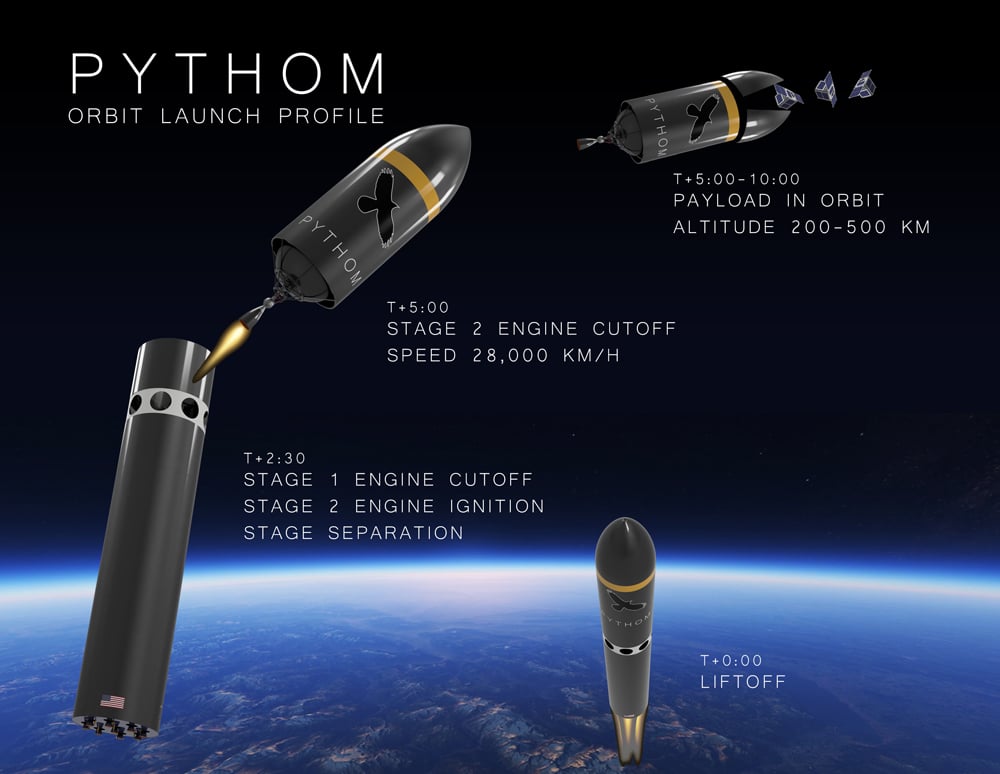
PythomSpace flight schedule (Copyright: Pythom Inc.)
Why is applying 3D printing more beneficial for you, rather than working with traditional technologies?
When chemicals react with each other inside a rocket engine under high pressure, the temperature reaches about 3,000 degrees Celsius. Unless we do something against the heat, sooner or later the engine will melt. And the material selection doesn’t matter: Inconel and steel both have melting points around 1500 degrees.
Since Inconel has better melting properties under pressure compared to steel, we used this material. To solve the temperature load, we utilized one of the propellants as a cooling liquid, running it through channels before it reaches the combustion chamber.
Our small engine is only about 30 centimeters high, which is a problem in regards to the tiny channels. The cooling channels on Saturn 5 and other big rocket engines had to be welded, etched or brazed. This is impossible on a small rocket - until 3D printing came around.
We still had to do detailed parametrics for the engine. Every single dimension - the best yield curves on the nozzle and much more - must all be mathematically accurate. Once we were happy with our equations, we put them in CAD and ran the design in digital analysis environments. Thanks to 3D printing, we had the rocket engine in our hands after finishing the design 1-2 weeks prior. 10 years ago, this would have taken another year.
The process is not entirely self-evident though, so finding the right manufacturer is crucial. Thanks to their amazing feedback, we worked flawlessly with the GKN Additive team.
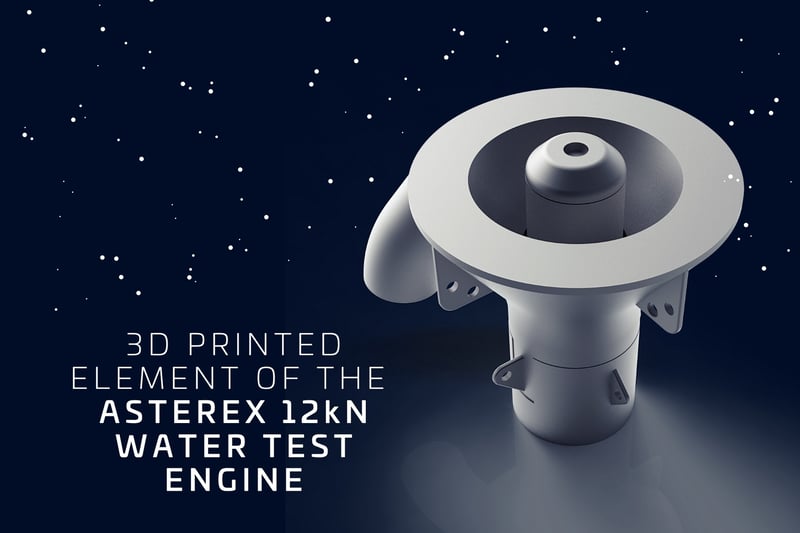 The application that GKN Additive has 3D printed is part of a water engine - It’s a set of 4 Inconel parts printed individually and assembled together. The purpose of the prototype is to test the pressure. (Copyright: Pythom Inc.)
The application that GKN Additive has 3D printed is part of a water engine - It’s a set of 4 Inconel parts printed individually and assembled together. The purpose of the prototype is to test the pressure. (Copyright: Pythom Inc.)
Where on your roadmap are you right now? What are your next steps?
Before we can test a real rocket engine, we need to check that it will hold for pressure, has even spray distribution, mass flow and other criteria. The fastest and most economical way to achieve this is to 3D print a small engine without the nozzle and test it with water under different pressures. Our water engine is probably the first ever 3D printed version, and it was created with such few parts.
We are now done with this phase and are preparing for the hot test. Our office is up in the mountains and while we have been able to do water tests and all other development here, a hot test can get explosive so there are risks involved. We’ll fire the engine at our facility down in the Mojave Desert, at the same place where Elon Musk once started SpaceX. We are targeting around November 1st for the first hot test.
What are your plans after the water engine test and the hot test?
Our rocket is in a two-stage phase and we will be getting the base structures for the second stage to our shop in the next couple of weeks. Pending the engine performance, we hope to test fly the second stage early next year. Our first rocket launch is estimated for late 2021.

Tina and Tom are checking the 3D printed injector, that got mounted to the injector-flow test stand. (Copyright: Pythom Inc.)
What materials are most relevant for 3D printing rocket engines?
We have worked with Inconel 625 so far and will switch to Inconel 718 in the next phase. Both materials are nickel chromium alloys and were used already in the 60s. The main difference is that this time the material can be 3D printed. Also, materials are currently evolving quickly, so we are exploring options in aluminum and copper as well.
If you look back over the past year, what do you think was your biggest mistake and what did you learn from it?
We make mistakes all the time. I messed something up just yesterday. But the analytic tools we have reduce the impact of setbacks so that we are not as delayed by our blunders anymore. Here is an example:
We use computational flow analytics for the fuel to check exactly how and where it cools down. This technology is amazing because the fuel distribution in our first engine turned out to be crap. Instead of having to spend another year to rebuild, over a few days we could improve the cooling channels in a number of different designs. We are at 70 percent where we want to be right now and already know how to get to almost 100 percent.
I can't even remember a big mistake we did that actually impacted us more than 24 hours.
